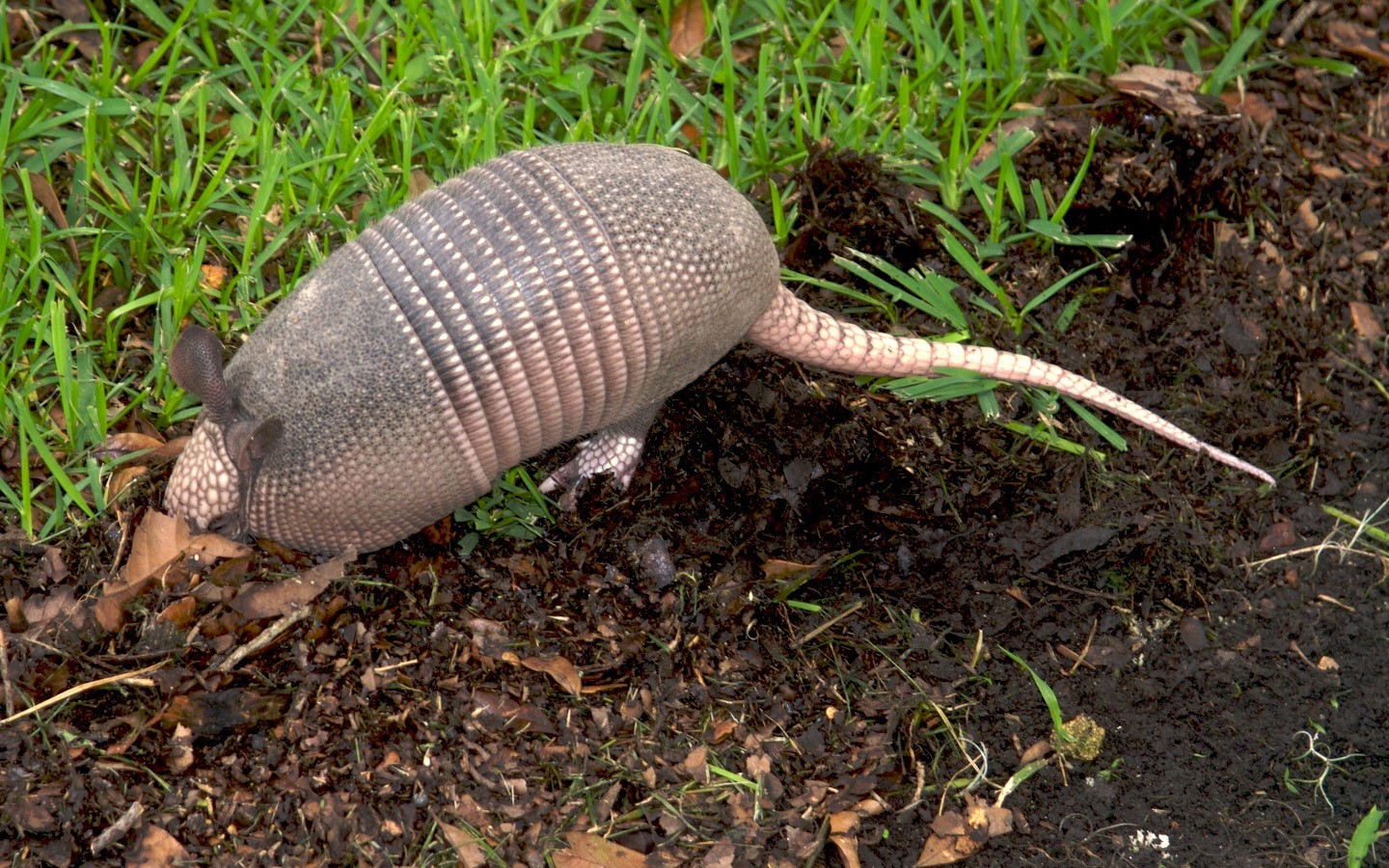Nine-banded armadillo
A species of Carapace, Also known as Long-nosed armadillo, Hoover hog, Possum on the half shell Scientific name : Dasypus novemcinctus Genus : Carapace
Nine-banded armadillo, A species of Carapace
Also known as:
Long-nosed armadillo, Hoover hog, Possum on the half shell
Scientific name: Dasypus novemcinctus
Genus: Carapace
Content
Description General Info
 Photo By Michael Overton , used under CC-BY-SA-3.0 /Cropped and compressed from original
Photo By Michael Overton , used under CC-BY-SA-3.0 /Cropped and compressed from original Description
The nine-banded armadillo (Dasypus novemcinctus) is a mammal from the group of armadillos (Dasypoda). It is one of the best known and most widespread representatives of this group, and it is also the most researched. The occurrence of this armadillo species is not limited to large parts of South America, it is the only species still alive today that is also common in North America, where it was first observed in the 1850s. The habitats that the nine-banded armadillo inhabits are very diverse and mainly include forests and partly open landscapes, which, however, have to be more or less moist; it is also considered extremely adaptable, but it cannot cope with longer periods of cold. The animals live solitary and dig underground burrows. They mate once a year. The usually four newborns usually represent four genetically identical kittens and remain with the mother for up to nine months. The armadillo species is also very adaptable in terms of nutrition and mainly eats insects, but also smaller vertebrates. Due to the wide distribution, up to seven subspecies are distinguished. Significant in the relationship with humans is the fact that the nine-band armadillo carries pathogens of leprosy and Chagas disease and is so often used in medicine as a laboratory animal. In some countries in its range it is also considered a food resource. The nine-band armadillo is not classified as endangered.
General Info
Lifespan
12-15 years
Diet
Nine-banded armadillo primarily subsists on insects, specifically beetles and ants. It effectively digs burrows using its sharp claws, pursuing subterranean insects and larvae as well as roots and tubers.
Appearance
The nine-banded armadillo is a medium-sized mammal, barrel-shaped with a somewhat elongated snout. It has a tough, leathery shell made up of flexible plates and short, tough fur. Its dull grey to brown coloration allows it to blend into its environment. Males tend to be slightly larger than females, however, there are no significant markings or pattern distinctions between genders or age groups.
Behavior
Nine-banded armadillo is a predominantly nocturnal and solitary species, known for its unique digging habits to forage for food and construct burrows. Its behavior includes armadillo-like defense mechanisms, curling into a ball when threatened. Nine-banded armadillo has an acute sense of smell for locating food and navigating, but is not notably territorial.
Population
Stable
Scientific Classification
Phylum
Chordates Class
Mammals Order
Cingulates Family
Long-nosed armadillos Genus
Carapace Species
Nine-banded armadillo